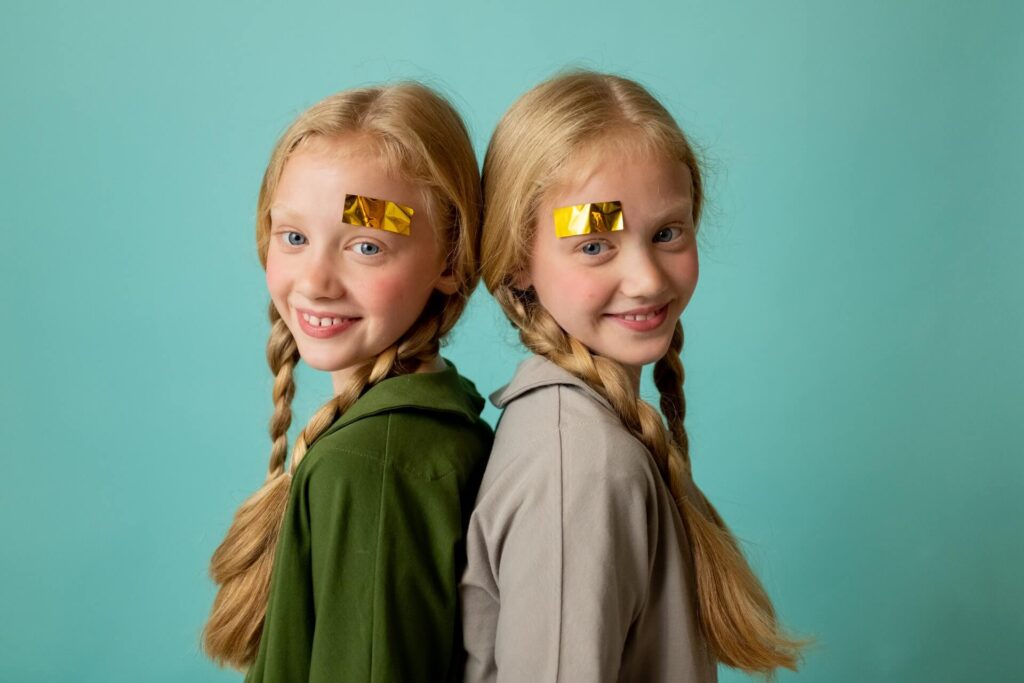Since we know that identical twins have similarities in almost every physical characteristic we begin to wonder if they have the same fingerprints!
If they do, wouldn’t that be a headache for the FBI to protect the crime scene? How would they identify people who look similar and identify them? Does science have an answer to this? Yes! Identical twins don’t have the same fingerprints and science has an elaborate answer. Let’s find out how and why!

What is an Identical twin and How It Happens
Identical twins are known as monozygotic twins. They look similar and most of the time identical. But there are always some small differences in their physical appearance. These differences can form from small differences in their environments such as the umbilical cord, pressure of the mother’s blood, position in the womb, etc. These can lead to differences like freckles, birthmarks, etc. Other than physical differences they also have different interests, personalities, and abilities.
Even though they have the same DNA they can be different in many ways and should be treated like different people. This type of twin is formed from a single egg fertilized by a single sperm. It is therefore called monozygotic twins. The rate of which is very low about 0.03%. The reason behind this phenomenon is unknown and occurs randomly. Scientists haven’t found any certain environmental factor.
We may see that some twins have the same diseases. That doesn’t happen because of their shared DNA. It can also happen due to environmental causes such as family history, medical conditions, and being grown up in the same environment. They can have similar connections in terms of emotion and preferences too. Due to being born and growing up together, they are able to understand each other better. But there aren’t any secret telepathy or abnormalities going on. But being twins can be fun and interesting. Get this book to have a peak through the lives of two twin sisters!
How Fingerprints Develop
The history of fingerprints goes way back to prehuman account as we spot fingertips in climbing species now such as chimpanzees and koalas. In fact, fingertips are very important in this type of species. Because the uneven surface of the fingers helps them improve their grips and keep balance, they also have many nerves that help us (and those with tips) feel the textures of different things.
If we fast forward to now, fingertips develop pretty early in the fetus. It is a complex process that requires the development of tissues. It is usually behind very early around 7-8 weeks.
At this time the hand plate or the flat part of the fingers begins to form. This part consists of mesenchymal tissue which also develops bone, cartilage, connective tissue, etc. After that around 10 weeks the flat plate divides into different parts to form fingers. This defragmentation of fingers consists of a number of signaling molecules. Duch as bone morphogenetic proteins that help establish correct position and identity. After this week begins the part where the fingers grow and become distinct or visible.
The bones develop and so do skin and nails. In 10 more weeks, fingertips are formed completely and have patterns and ridges. The ridges are divided into three main parts that are whorls, loops, and arches. The whorl is where the print is symmetrical and circular. Loops are longer and also curved. Arches are triangular. Which fingertip eventually forms is determined by several types of genes. However, the process or biochemical mechanism is unknown and complicated. It is also influenced by the environment during pregnancy.
Nutrition, BP, position, and rate of growth influence the formation process. We will also notice some abnormalities or irregularities due to different mechanical pressure on the pads. The pressure is created by the amniotic sac. Now, what is an amniotic sac? It is a bag of fluid that protects the fetus from external pressure during the development phase.
It works as a cushion that saves babies. Kind of like an incubator for their development. In the case of twins, they stay in a different positions in the womb and get different and irregular pressure on their different fingers. Because there will never be the exact type or amount of pressure on one place. This eventually leads to different fingertips on different people. Other than twins, fingertips also work as identification of people because no two fingertips are ever the same.
Do Twins Have the Same Fingerprints
Now that we know how fingertips are formed, we need to address the question if twins have the same fingerprints. Especially if identical twins look the same. But science has a different answer to it. It says even identical twins don’t have identical fingertips. Although they share the same DNA and same characteristics, fingerprints are always different in twins. In fact, the chance of two people having the same fingerprints is one in 64 billion, which is very uncommon.
It can be explained with a very simple and interesting example. We think identical twins would have the same fingertips because they share the same DNA. But think about our own fingerprints. We have the same DNA in our entire body. Even then we don’t have a similar fingerprint on two of our fingers. If fingerprints were formed that way it would be a case where people have the same fingerprints.
If you don’t know the information yet, note that no one has the same fingerprints on two of the fingers. Still skeptical? Try to unlock your device using a different finger with a fingerprint lock. You will see that it can’t be done.
You can also look closely at your fingerprints and see the patterns on them. Yes, you will see that people have the same pattern of whorl or loop or arches, but the patterns inside are different. You can try to color your finger and take a look at the print on a page.
No two of your fingers have the same fingerprints which is also why it is used as a physical characteristic at a crime scene. It is considered to be a unique characteristic of every person.
Scientists also use this example in the debate of nature vs nurture. This phenomenon explains that physical characteristics can also be determined by the development environment. Not everything is determined by DNA. It is important to protect the environment for the healthy development of babies. Hence, to answer the question at this point, no, twins do not have the same fingerprints even if they are identical.
The Reason Behind It
There’s an in-depth analysis of the reason why fingertips are different in twins. According to an analysis by some geneticists at the University of Edinburg. They figured that the genes that are expressed during development to form fingerprints are unearthed in three different signaling pathways.
Each of these plays a role in directing the growth of skin on fingertips. Two genes are that involved are known as WNT and BMP. This reveals an answer that was unanswered for many years- genes responsible for different fingertips.
WNT and BMP create the grooves and bumps of the fingerprint. The third one is called EDAR. Which works with WNT during development. They conducted the study on mice who have simple patterns on their digits. They found that WNT and BMP work in opposite ways where WNT stimulates cell growth and BMP suppresses them.
Combined they create uneven surfaces. On the other hand, EDAR signals determine the size and spacing of the ridges or bumps created by WNT and BMP. When scientists removed one of these they saw significant changes in the patterns.
This opposite relationship in human fingertips is known as Turing patterns where overlapping chemical activities create complex patterns. Hence the fingerprints aren’t as simple as seen on mice. We can see this pattern on stripes and spots on animal fur which is why you will never see two zebras with sa,e patterns on their bodies.
Interesting, right? However, the pattern – whorl, loop, or arch, depends on the anatomy of the finger and timing. Researchers found that primary ridges form in three locations- the center of the fetus’ soft pad, the end of the finger, crease of the joint. Ridges then spread out like waves where each serves the position of the next one. If the pads are large and ridges from early then we see a whorl. If pads are linger and symmetrical they form a loop. And if ridges fail to form we see arches. If they form late, they also tend to form arches.
The three chemical signals can also be found in other parts of the body with hair follicles. But the fingers are free of them because the formation of follicles on the palms of our hands halts early. Scientists assume that the structure of the largest organs might work in the same way.
This scientific explanation helps us understand that although twins are born with similar DNA, the timing and pattern of their development play the only role in forming fingerprints. Therefore, it is scientifically proven that twins don’t have the same fingertips. You can see a detailed study on 84 pairs of twins’ fingerprints that prove the statement that twins don’t have the same fingerprints although they might have some similarities.
Conclusion
It is impossible to fund two people with the same fingertips which is why it is considered to be an identifier. It is good that we are asking questions like this which encourages scientists to research more on the field of twins which is still a mysterious part of science.
To make the learning fun here is a video of two identical doctors explaining the answer in less than a minute.








